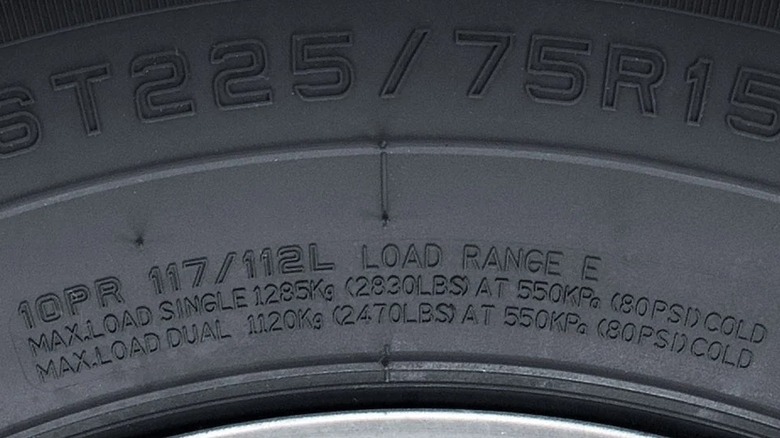The Pressure Rating On Your Tire Isn't The Number You Should Be Using
The many letters and numbers on your tire can be quite overwhelming and confusing to read, but they actually provide key details about the most important rubber in your car. For one, there's the tire size usually represented by XXX / YY RZZ, where X, Y, and Z are digits. It tells you how big your tire is, so you'll know what to get for your vehicle. You'll also see a DOT code on the sidewall that helps you determine the age of your tire, as well as a speed rating symbol that indicates the tire's maximum speed.
Another indicator that's standard across all tires is the maximum pressure. Unlike other markings that are written in code, though, this appears plainly on your tire as MAX PRESS with the corresponding pressure in kPa and PSI. This means if you need to find the maximum inflation your tire can handle, you can just check the sidewall and see it right away — no need to look up any code.
But just because this pressure rating says a specific value doesn't automatically mean it's exactly what you should use for your tire. This is a common misconception you need to avoid.
What does MAX PRESS on your tire actually mean?
The PSI on the side of your tire stands for pounds per square inch and is a measure of the highest allowable air pressure your tire can accommodate before it starts to fail. It's also how much air the tire needs when supporting the maximum load (which, by the way, is also printed on the sidewall).
However, the pressure rating on your tire is entirely different from the actual pressure you should inflate it to. It's simply a maximum indicator, not a strict reference point to be followed. In fact, the tire's pressure rating is normally much higher than the recommended pressure set for your specific car make and model. Pumping up your tires to that number means you're already overinflating them. When you overinflate a tire, you're putting yourself and others in danger, primarily because the tire is at risk of a blowout.
Therefore, instead of relying on the MAX PRESS value on the sidewall, you should actually use the recommended tire pressure for your car. It's stated in the sticker found on the driver's side or in your owner's manual. This figure is determined by the car manufacturers themselves and is specifically designed to get the most out of your tires, all while considering the performance, ride comfort, and safety. It's almost always the safest pressure your tires should be filled to, so you really wouldn't have a need to check and use the pressure rating on your tire.

